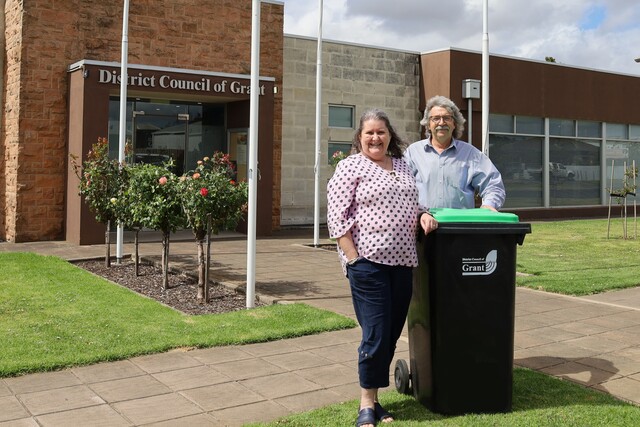This is the first in a series of articles by Ron Exiner* looking at approaches Local Government can take to cement its place as a vital sphere of government for communities as well as an equal partner in our Federation.
Financial sustainability is important because long term financial viability (sustainability) is a true indicator of the place of Australia’s third sphere of government in the Australian governing structure. Constitutional recognition is well and good. But the importance of having one’s existence guaranteed by the Constitution is weakened if Local Government does not have the resources to do what it must and should do.
Overall financial sustainability was the elephant in the room during the recent Hawker review of cost shifting. Local Government’s efforts to have cost shifting recognised is underpinned by the sector’s concern that its long term financial sustainability is being undermined.
It is interesting to reflect on why the Commonwealth’s response to Hawker was to commission the Productivity Commission to investigate Local Government’s own revenue raising capacity. A cynic might say it was to divert attention from the erosion in Commonwealth funding to Local Government. On the other hand, it might just be the stimulus we need to seriously consider this issue.
My approach is to look at financial viability in the context of the issue of overall Local Government sustainability. My hypothesis is that as the third level of Australian government, Local Government’s challenge is to be sustainable as a level of government. Financial sustainability is a critical, but not the only factor in being long term sustainable.
While my experience of Local Government is in Victoria, what I have to say will be applicable nationally. Victoria probably provides a good context to consider the issues, as it has experienced restructure (forced amalgamations), ratecapping (a forced 17.5 per cent across the board rate revenue reduction following restructure), significant development in the sector following amalgamations, and good progress in identifying infrastructure renewal deficits which go to the heart of true financial sustainability.
The Productivity Commission’s draft report focuses on both the capacity of the populations of the some 620 Local Government bodies in Australia to pay higher rates and their willingness to do so. Given the disparity between the various measures of capacity and a property tax such as rates, it is at least as important to focus on willingness as it is to focus on capacity.
I suggest that there are two basic issues underpinning financial sustainability. Local Government does not get its fair share of funding from the other two spheres of government, both of which have had burgeoning revenue from growth taxes over the past 15 or so years. However, Local Government has not done enough to secure its own revenue.
The first point is pretty obvious and has been done to death by all recent commentary on Local Government financial sustainability. There is evidence wherever you want to look on the failure of the quantum of Commonwealth funding to keep up with needs or growth in its own revenue. The previous Commonwealth Government preferred to use its massive surpluses for individual tax cuts, squirrelled away “future” funds for specific purposes and pork barrelling at election times.However, Local Government also has to look at its own responsibility for the revenue over which it has control.
Local Government prides itself on being close to its communities and knowing its communities’ needs. It has also done significant work in identifying the gap between depreciation and renewal of community infrastructure and knows what the problems are. It also knows that it does not have the full capacity to bridge that gap. I suggest it has the responsibility to show leadership by taking hard decisions to raise sufficient revenue to do everything it can to meet the needs of its communities.
It may not be able to make good the shortcomings of the past, but it should be striving to meet the needs of the present – with some rural Councils and their particular problems as honourable exception.
At the very least, Local Government, particularly in urban areas, has to get away from the nonsense of using CPI as an indicator for rate rises. I understand well that Local Government is political and operates in a political environment. I can hear Councillors’ voices saying that raising the rates by the levels required is not only novel, but courageous (those who are familiar with ‘Yes Minister’ will know that this means they will not only lose votes, but will lose the (next) election).
My question is: “Is this leadership?” The challenge for true sustainability is not so much about Constitutional recognition. It is to be a sphere of government that is so valued and respected both by communities and other levels of government for what it is and what it does, that it can both take the measures it can control and also influence other levels of government for those measures it cannot control to achieve the revenue it needs.
How to achieve this indispensability is what
I will look at in the subsequent articles.
A couple of related reflections…
Don’t just focus on the statistical validity of the findings of the Productivity Commission’s draft report. It is more important to consider what Local Government has to do to raise the revenue it needs to do the job and how to take its communities along for the journey
If we were unable to get adequate Commonwealth funding for our infrastructure during the cargo cult boom times of the 1990s and early 2000s, how likely are we to get it now given the inflationary pressures in the economy and the Commonwealth’s stated intention to focus on supply side bottlenecks and Budget cuts?
*Ron Exiner has held senior management positions in corporate, executive and financial services in various Victorian Councils, spanning more than 20 years. As Director of Exintel Pty Ltd, a consultancy focusing on governance, strategic planning and policy development, he prepared the Good Governance Guide (2004) for the Good Governance Advisory Group (Victorian Government, Municipal Association of Victoria and Victorian Local Governance Association), and Excellence in Governance for Local Government (2005) for CPA Australia.







